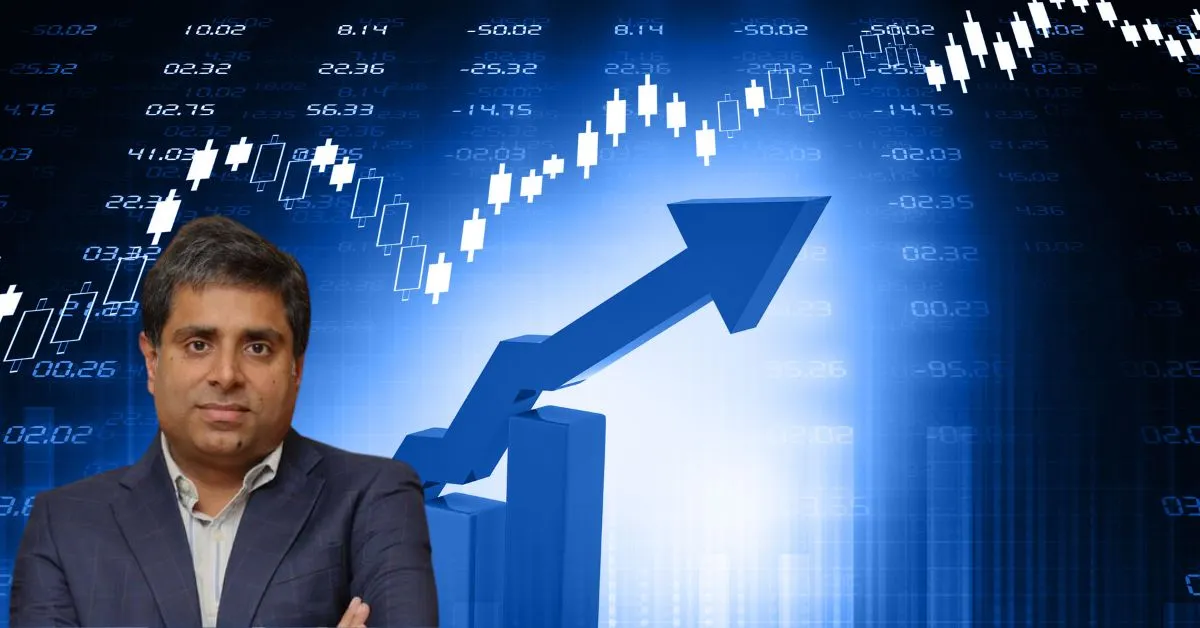CIO Bullish Outlook Sparks Hope for Indian Stock Market Rally
Investment professionals are expressing optimism about Indian stock market prospects as the country’s economy demonstrates remarkable resilience. Chief Investment Officers across leading financial institutions project double-digit returns for Indian stocks over the next 12 months, driven by strong domestic fundamentals and improving corporate earnings.
Market experts anticipate the Nifty 50 index could surge to 30,000 by next Diwali, representing substantial upside potential from current levels. This bullish Indian stocks forecast comes as the benchmark indices recover from recent corrections, with banking and market professionals highlighting robust domestic participation as a key driver.
Corporate Earnings Growth Powers Investment Case
The investment thesis for Indian equities centers on accelerating corporate profitability. Analysts expect corporate earnings to grow at 12-15% CAGR over the coming years, with Nifty 50 companies projected to deliver 14% earnings expansion in FY27. This earnings upgrade cycle marks a significant turnaround after several quarters of downgrades.
Recent data reveals that corporate profits as a share of GDP have grown from 1.9% in FY 2020 to 6.9% in FY 2025, nearly tripling over this period. The double-digit earnings growth trajectory supports higher valuations and positions Indian stock market for sustained appreciation despite global headwinds.
Policy Support and Rate Cuts Boost Market Sentiment
The Reserve Bank of India’s monetary policy easing has emerged as a crucial catalyst. The RBI has delivered a 100-basis-point rate cut, with another 25 bps reduction anticipated soon. These interest rate reductions will stimulate consumption and capital expenditure, creating favorable conditions for Indian stock market returns.
Government initiatives including income tax relief, GST rationalization for automobiles and FMCG sectors, and continued PLI scheme support for manufacturing provide additional momentum. These policy reforms strengthen the foundation for Indian equities to outperform in the year ahead.
US Market Concerns Drive Cautious Positioning
While maintaining a positive stance on Indian stocks, Chief Investment Officers express caution regarding US market valuations. Concerns center on elevated price-to-earnings multiples in American technology stocks, particularly AI-related companies that have absorbed extraordinary investment.
The strengthening US dollar and rising bond yields present additional risks. Market professionals warn that US tech stocks may have overheated, with current valuations potentially unsustainable. This divergence creates opportunities for investors to rotate capital from expensive US markets into attractively valued Indian equities with superior growth prospects.
Gold Prices and De-Dollarization Trend Analyzed
Investment experts highlight that gold prices remain supported by central bank demand and de-dollarization trends. Central banks worldwide now hold more gold than US Treasuries by valuation for the first time since 1996, with approximately 36,000 tonnes valued at $4.5 trillion.
However, CIOs caution that the current gold price rally may not persist indefinitely. While the trend toward de-dollarization continues and central bank gold purchases remain strong at over 1,000 tonnes annually, investors should exercise caution at elevated price levels. The gold market outlook suggests selective opportunities rather than aggressive positioning.
Sector Recommendations for Portfolio Construction
Market strategists recommend focusing on banking and financials, automobiles, capital goods, infrastructure, and FMCG sectors within Indian stocks. Defence and consumer discretionary segments are positioned for multi-year growth cycles driven by government capex and demand recovery.
Large-cap stocks offer stability, while selective opportunities exist in mid and small-caps. The IT sector presents contrarian opportunities as H-1B visa fee relaxations and stabilizing global tech demand improve sentiment. This sector rotation strategy allows investors to capture double-digit returns while managing risk.
Foreign Investment Flows Critical to Market Performance
Foreign Institutional Investors have turned net buyers after months of outflows, signaling renewed confidence in Indian stock market fundamentals. While FIIs sold nearly $15 billion year-to-date during periods of volatility, recent inflows suggest the worst may be over.
Domestic Institutional Investors and retail participants through SIPs provide consistent support, with monthly SIP inflows reaching record levels above Rs 29,000 crore. This domestic liquidity cushions against external shocks and supports Indian equities during global market turbulence.
Valuation Considerations and Risk Factors
The Indian stock market trades at premium valuations, with the Sensex at approximately 23 times forward earnings. While this represents one of the highest rates globally, analysts argue it reflects productivity gains, economic formalization, and superior growth rates.
Key risks include US tariff policies, geopolitical tensions, and potential earnings disappointments. However, India’s limited export exposure to the US at only 2% of GDP makes the economy less vulnerable than other emerging markets. The investment outlook balances these risks against structural growth drivers.
Long-Term Structural Growth Story Remains Intact
India’s market capitalization could reach $10 trillion by 2030, backed by strong economic fundamentals and a maturing investment ecosystem. The economy is projected to expand at 6.5-6.8% in FY26, maintaining its position as the fastest-growing major economy globally.
The Indian stock market benefits from a deep, liquid, and diversified market structure with approximately $5.5 trillion in market capitalization. Structural reforms, digital transformation, and demographic advantages position Indian equities for sustained outperformance over the long term.
STANDARD DISCLAIMER
This article is intended for educational and informational purposes only. It should not be considered as financial, investment, or trading advice. The information presented is based on research and market analysis as of the publication date and may not reflect current conditions. Stock markets are subject to risks including loss of principal. Past performance does not guarantee future results. Readers should conduct their own research and consult with qualified financial advisors before making any investment decisions. The author and publisher assume no responsibility for any financial losses or damages arising from the use of information contained in this article.
